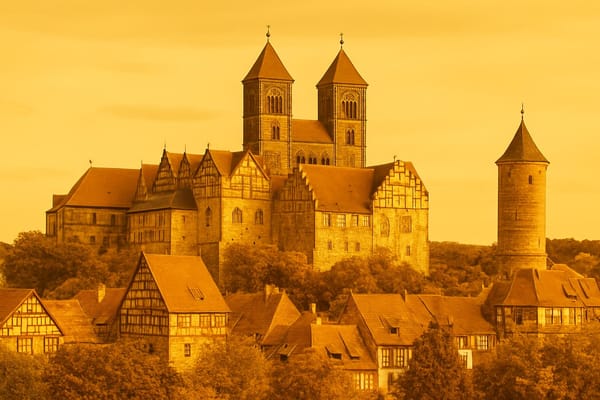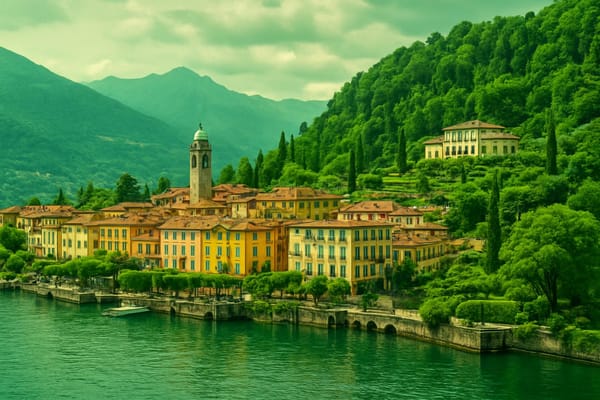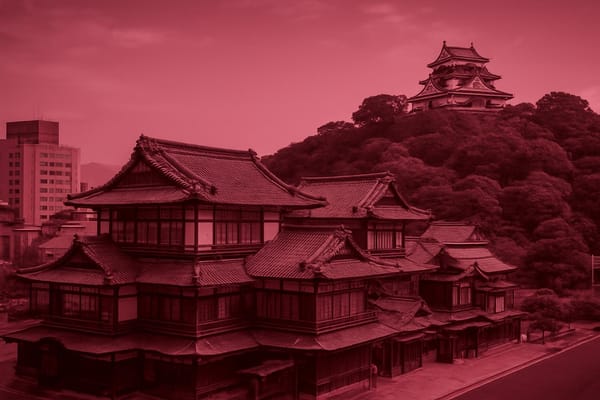Zaragoza
Discover Basilica del Pilar, Aljaferia Palace, Mudejar architecture, Ebro River views & tapas.

Important things to know about Zaragoza
Zaragoza, Spain is a vibrant and resilient city in the heart of the Aragon region that blends historical depth with modern dynamism, offering a genuine sense of local life beyond the typical tourist gaze; with a population that reflects a mix of long-standing residents and newcomers, Zaragoza’s urban fabric is defined by diverse neighborhoods, a stable economy anchored in services, logistics and industry, and an evolving tech and creative scene that attracts entrepreneurs and students alike. The climate brings hot summers and mild winters, shaping a lifestyle that favors outdoor markets, neighborhood cafés and seasonal festivals where food, music and community are central to daily rhythms; Spanish is predominant but the city’s educational institutions and international businesses contribute to a growing multilingual atmosphere. Public transport, road connections and proximity to other major Spanish cities make living in Zaragoza practical for commuters and families, while local planning emphasizes green spaces, cultural programming and sustainable development to improve quality of life. Gastronomy in Zaragoza emphasizes regional ingredients and traditional recipes reinterpreted by contemporary chefs, reinforcing a strong culinary identity that locals take pride in. For anyone researching Zaragoza, Spain for relocation, study or business, insights into cost of living, housing trends, employment sectors and community life are essential to understanding what makes the city both historically rich and forward-looking; overall, Zaragoza projects an image of an accessible, well-connected Spanish urban center with plenty of everyday character and opportunities for those who want to experience authentic regional life.
Sightseeing hot-spots in Zaragoza
Zaragoza is a treasure trove for sightseeing lovers, where the skyline is dominated by the majestic Basilica del Pilar overlooking the shimmering Ebro River. Strolling along the riverbank toward the Plaza del Pilar, visitors encounter centuries of history in a compact, walkable city center. The Basilica itself offers stunning baroque interiors and the chance to climb a tower for panoramic views of Zaragoza and the surrounding Aragonese landscape, while the nearby La Seo Cathedral showcases intricate Mudejar decoration that earned the region recognition as a UNESCO cultural landmark.
A short walk from the plazas brings you to the imposing Aljafería Palace, a fortified medieval palace that blends Islamic, Christian and later styles into an evocative tour through Spain’s layered past. Inside, lavish halls and delicate stucco work recall the Taifa period, and the palace now houses the regional parliament, making it a living monument where history and modern civic life meet. Archaeology enthusiasts will also appreciate vestiges of Zaragoza’s Roman origins such as the Roman Forum and baths, along with museums that preserve works by local son Goya, whose influence colors the city’s artistic identity.
Beyond the monuments, Zaragoza’s vibrant neighborhoods and culinary scene make sightseeing a sensory experience: lively tapas bars, bustling markets, and leafy promenades around the Ebro invite lingering and exploration. Seasonal festivals amplify the charm, particularly the colorful celebrations in October that fill streets and plazas with music and tradition. Whether your interest is architecture, history, art or food, Zaragoza, Spain offers compact, memorable sightseeing moments that reward relaxed wandering and deeper discovery.
Hotels to enjoy in Zaragoza
Zaragoza is a vibrant city where hotels in Zaragoza offer a blend of historic charm and modern comfort, often within walking distance of the Basílica del Pilar and the imposing Aljafería palace. Travelers will find a wide spectrum of options, from intimate boutique hotels tucked into old town streets to well-known chains that provide reliable amenities for families and business visitors alike. Many Zaragoza hotels capitalize on their riverside position along the Ebro River, offering rooms with scenic views, and are conveniently close to the lively plazas, tapas bars and cultural venues that define the city. Whether you are searching for luxury stays with spas and rooftop terraces or budget-friendly rooms with smart design and good service, the selection of hotels in Zaragoza meets diverse needs while keeping you connected to the heart of the city’s history and nightlife.
When planning a stay, consider practical perks such as free Wi-Fi, breakfast included, on-site parking and easy access to Zaragoza-Delicias train station or the tram network for quick trips to the airport or surrounding towns. Business travelers often prioritize Zaragoza hotels offering conference rooms and proximity to the Feria de Zaragoza, while families look for spacious suites and child-friendly services. Booking early for major events and festivals can secure better rates and preferred rooms; many accommodations also provide flexible cancellation and special packages that combine sightseeing or culinary experiences. With thoughtful choices and local knowledge, finding the right accommodation in Zaragoza enhances both your comfort and your ability to explore this spirited city.
Restaurants to try in Zaragoza
Zaragoza’s culinary landscape blends centuries of tradition with contemporary creativity, making restaurants in Zaragoza a must-visit for anyone who loves Spanish cuisine. From cozy taverns serving authentic tapas to sleek dining rooms offering modern interpretations of Aragonese classics, the city celebrates local ingredients like fresh river fish, seasonal vegetables, and artisanal cheeses. Strolling near the Ebro River, you’ll find family-run eateries where recipes are passed down through generations alongside experimental kitchens where chefs remix history into refined tasting menus. The variety means you can savor comforting stews, hearty roasts, and delicate seafood plates all within a short walk, and many venues pair their dishes with excellent local wines and craft beers to heighten the experience.
For travelers and food lovers searching for the best restaurants in Zaragoza, the scene rewards curiosity: market-driven menus change with the seasons, and small plates encourage sharing and discovery. Whether your preference is a bustling bar for late-night tapas hopping, a refined spot for romantic dinners, or a vibrant open kitchen showcasing the region’s produce, Zaragoza offers a restaurant culture that values authenticity and innovation equally. Dining here is not just about a meal but about encountering a region’s history and identity on your plate, making every bite a memorable part of exploring Zaragoza’s rich gastronomic tapestry.
Best shopping stops in Zaragoza
Zaragoza is a vibrant destination for shopping in Spain, and the shopping highlights of Zaragoza span charming historic streets to modern retail hubs. Stroll down Paseo Independencia and Calle Alfonso I to find a mix of high-street brands, independent designer boutiques, and elegant shoe stores, all within walking distance of the majestic Plaza del Pilar. For a lively, atmospheric experience, the narrow lanes of El Tubo offer tapas by day and artisanal shops by night, while the beautifully restored Mercado Central showcases fresh produce, regional delicacies, and small vendors selling local products like Aragonese cheeses, olive oil, and cured meats-perfect for unique souvenirs or gourmet gifts. Whether you’re hunting for contemporary fashion, vintage finds, or specialty items, Zaragoza’s central shopping districts balance traditional charm with modern retail convenience.
Beyond the historic center, Zaragoza’s shopping scene includes large centers and neighborhood markets that cater to every taste and budget. Puerto Venecia, one of the largest open-air shopping complexes in Spain, brings flagship stores, leisure activities, and seasonal events together for a full-day outing, while boutique neighborhoods near El Tubo and the Ebro river are ideal for discovering handcrafted jewelry and ceramics. Seasonal markets and cultural fairs add to the appeal, offering handmade textiles and local crafts that reflect Aragon’s heritage. Practical tips for visitors include timing your trip to catch market days, combining shopping with sightseeing to make the most of the compact city layout, and exploring both the streets and malls to experience the best of Zaragoza shopping, from traditional artisan stalls to contemporary retail experiences.
Nightlife highlights in Zaragoza
Zaragoza's nightlife offers a vibrant mix of traditional and modern experiences that draw locals and visitors alike. Start in El Tubo, where narrow streets are lined with bustling tapas bars and cozy taverns serving local wines and signature snacks; this area is a cornerstone of Zaragoza nightlife and perfect for bar-hopping into the late hours. For a more relaxed evening, the riverfront along the Ribera del Ebro invites sunset strolls followed by cocktails at chic terraces, while historic plazas come alive with open-air terraces and lively conversation. The city's student population ensures an energetic scene of affordable drinks, creative bars, and friendly crowds, making it easy to find a spot that fits your mood.
When you want to dance or catch a show, Zaragoza delivers with venues offering live music, DJ sets and intimate concert halls that spotlight local and touring acts. Trendy clubs around the city center range from underground electronic nights to mainstream dance floors, and many bars transform after midnight into vibrant social hubs. Whether you're seeking gourmet tapas, craft cocktails, or late-night music, Zaragoza combines tradition and contemporary flair to create a memorable night out that highlights the best of Spain’s northeastern cultural and culinary scenes.
Getting around in Zaragoza
Zaragoza offers efficient air and rail connections that make the city an accessible hub in northeastern Spain: Zaragoza Airport (Aeropuerto de Zaragoza) handles a mix of domestic and international flights, cargo operations and seasonal routes, and is linked to the city by regular shuttle services, taxis and car rental options for travelers and business visitors; meanwhile the main rail gateway, Zaragoza‑Delicias station, is a modern interchange served by AVE high-speed and regional trains, providing fast high-speed rail links to major Spanish cities as well as reliable local and commuter connections, making transfers smooth for passengers arriving by plane or train and supporting tourism and commerce in the Aragón region; thanks to integrated ticketing, parking and onward public transport options, visitors find it straightforward to move between the airport, the train station and the city center, while the growing frequency of services and improved passenger facilities enhance Zaragoza’s overall accessibility and appeal for both short trips and longer journeys.
Culture must-see's in Zaragoza
Zaragoza is a vibrant city on the banks of the Ebro where centuries of history converge into a lively contemporary cultural scene. Visitors are drawn to the imposing Basilica del Pilar, an emblematic baroque landmark whose domes and riverfront setting define the city skyline, and to the fortified Aljafería, a tasteful example of Mudéjar artistry that recalls the region’s medieval multicultural past. Museums in Zaragoza celebrate both local and national heritage, with collections that highlight the work and influence of Goya alongside archaeological finds and modern art exhibitions. Strolling the old quarters and bridges reveals a blend of Roman foundations, Islamic-inspired ornamentation and modernist façades, making Zaragoza a compact destination where history and innovation sit side by side. Photogenic plazas, pedestrian passages and the riverfront promenades invite exploration and provide numerous opportunities for SEO-relevant searches like “what to see in Zaragoza” and “Zaragoza cultural attractions.”
Beyond monuments, Zaragoza’s cultural pulse is strongest in its festivals, culinary scene and performing arts. The city comes alive every autumn for the Fiestas del Pilar, a dynamic celebration of music, processions and open-air events that attracts regional and international visitors. Culinary culture here fuses Aragonese traditions and modern tapas culture: from hearty stews to inventive small plates, gastronomy in Zaragoza is a reason for many “things to do in Zaragoza” itineraries. Contemporary galleries, theaters and a busy calendar of concerts and cultural events sustain a year-round program that appeals to both families and solo travelers. Whether seeking art, history, local cuisine or lively street life, Zaragoza offers a richly layered cultural experience that rewards curiosity and encourages deeper discovery.
History of Zaragoza
Zaragoza, Spain traces a layered and dramatic past that begins long before the modern city rose on the banks of the Ebro River. Originally an Iberian settlement, it became the Roman colony of Caesaraugusta in the 1st century BC, leaving behind a grid of streets, a forum, and remnants of a theater that still surface in the historic center. After the fall of Rome the city passed through Visigothic and then Muslim hands, gaining the Arabic name Saraqusta, and developing into a thriving taifa capital where palaces and mosques shaped the urban fabric. The 11th-century Aljafería Palace, a jewel of Islamic-era architecture, survived these transformations and later became part of the Christian court when Alfonso I of Aragon reconquered the city in 1118. Over centuries Zaragoza evolved into a crossroads of cultures; the blend of Roman foundations, Islamic art, and Christian institutions produced the distinctive Mudéjar architecture visible in landmarks like La Seo and the later Baroque Cathedral-Basilica of Our Lady of the Pillar, a focal point of devotion and the centerpiece of the annual Fiestas del Pilar.
The more recent history of Zaragoza, Spain reflects resilience and reinvention. In the early 19th century the city became a symbol of national resistance during the Peninsular War: the heroic defense against Napoleonic sieges by figures such as General Palafox left an indelible mark on Spanish memory. Industrialization and the arrival of the railway in the 19th and 20th centuries transformed the local economy, while the University of Zaragoza, with roots in the 16th century, anchored education and culture. The 21st century brought renewed international attention when Zaragoza hosted Expo 2008, catalyzing urban regeneration along the Ebro River and modern projects like the Third Millennium Bridge, enhancing both tourism and quality of life. Today the history of Zaragoza is visible at every turn: archaeological Roman remains, the fortified walls of the Aljafería, Mudéjar towers, and bustling plazas tell a story of conquests and coexistence, making Zaragoza a rich destination for those seeking to explore the layered history of northeastern Spain.



